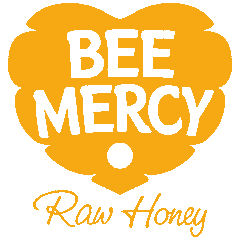The Composition of Raw Honey
Oct 15, 2014
The main constituents of raw honey are the carbohydrates glucose and fructose which make up 95% of raw honey’s dry weight. These sugars are the main taste-building compounds. Generally raw honey with higher fructose content is sweeter compared to honey with higher glucose content. In the process of digestion after honey intake, these principal carbohydrates are quickly transported into the blood and can be utilized by the body for its energy requirements. A daily dose of 20 g of honey will cover about 3% of the required daily energy.
Beyond carbohydrates, raw honey contains many other compounds including proteins which make up about 0.5% of honey. These proteins are mainly enzymes and free amino acids. The three main enzymes are amylase which breaks down starch into smaller sugar units, invertase which converts sucrose into fructose and glucose, and glucose oxidase which produces hydrogen peroxide important in raw honey’s anti-inflammatory effects. The smell of honey depends on the quantity and type of amino acids.
It should be noted that the composition of raw honey varies greatly depending on the flower's origin. Minerals & vitamins are one example of variation depending on the flower source. From a nutritional point of view the minerals chromium, manganese and selenium are important, especially for 1 to 15-year-old children. The elements sulfur, boron, cobalt, fluoride, iodide, molybdenum, and silicon can be important in human nutrition although there is no recommended daily intake proposed for these elements. Vitamins found in honey include Vit K, Vit B1, B2, B6, B5, C, and Niacin.
Raw Honey also contains choline and acetylcholine. Choline is essential for cardiovascular and brain function as well as for cellular membrane composition and repair whereas acetylcholine is an important neurotransmitter in the brain.
Polyphenols are a group of compounds that contribute to the appearance and functional properties of honey. Polyphenols are mainly flavonoids (quercetin, luteolin, kaempferol..etc) and these compounds are well known to have antioxidant properties.


